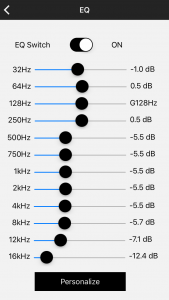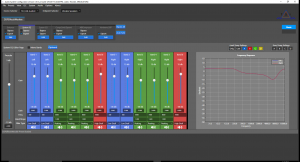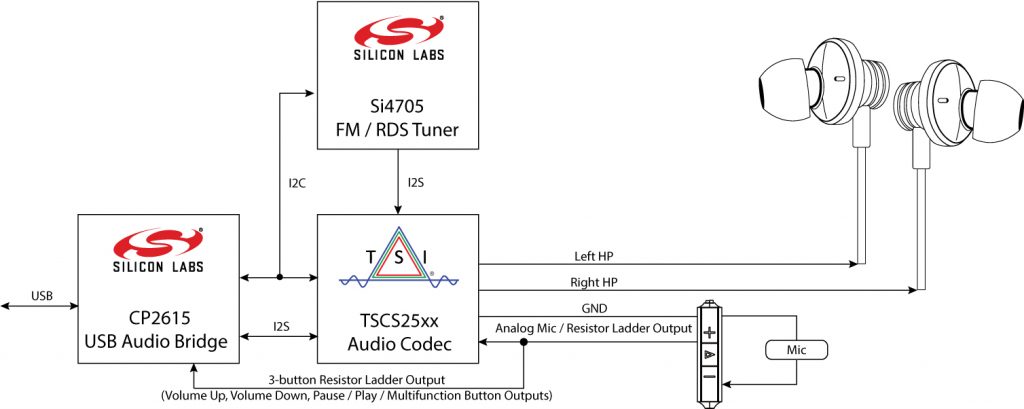 The TDTSI010 Reference Design – USB Type-C to Headset / Headphone Adapter: More flexibility, near universal acceptance…
The TDTSI010 Reference Design – USB Type-C to Headset / Headphone Adapter: More flexibility, near universal acceptance…
Traditionally, audio accessory OEM / ODMs only had to focus on doing one thing: Making excellent, sounding portable audio accessory products.
The advent of the new USB Type-C port along with the near simultaneous disappearance of the 3.5mm analog audio jack from mobile devices has brought about a whole new host of market opportunities… as well as whole host of challenges for these companies.
While nearly identical to the available TDTSI016 reference design with respect to button functionality, the TDTSI010 reference design enables the designer to implement a GPIO-button-based Headset or Headphone design for a USB Type-C port on most ANY type of device running almost ANY type of OS.
While the TDTSI010 demo board is no longer available for evaluation shown below (as it has been replaced by the lower-cost USB-C100 / USB-C1010 turn-key module), the reference design files for the TDTSI101 still are available – now offered both WITH and WITHOUT FM / RDS functionality!
If you are wanting to evaluate a TDTSI010 reference design evaluation board with FM / RDS functionality, click on the following link to purchase one!
Spend your resources fine-tuning your mechanical ID, not your microcontroller code
All USB-C based versions of the design employ a cost-effect, fixed function USB to I2S audio bridge which saves the OEM / ODM the agony of having to learn and then debug complex microcontroller coding or start from scratch using other vendors “example source code”. Tempo provides the configuration file for the TSCS25xx while the latest firmware is available directly from SiLabs. What could be simpler?
Spend your energy focusing on product differentiation, not spinning PCB boards
Naturally, a schematic, BOM, and 4-layer PCB layout files (native and Gerbers) are made available to our customers (just like all other audio IC vendors do), HOWEVER, the design files that Tempo provides have been designed with RoHS, WEEE, CE, FCC and DfM compliance in mind, DRAMATICALLY reducing your Time to Market. Just because others might also have a “reference design” doesn’t mean it is ready to take to production.
Spend your time improving the acoustics, not coding DSPs
Tempo also offers a simple-to-use Windows®-based GUI (Tempo ASC) that enables the acoustical engineer to generate the design-specific DSP “tuning” files (*.PNL). There is even an automatic function that generates the inverse EQ curve from a customer-provided target SPL curve that can be entered into the GUI in minutes. Obtaining a flat frequency response can then be realized within seconds. The generated PNL file is used to help customize the CP2615 configuration file that can be loaded into the end-product via the Android app. Note: Flash memory is not accessible inside the USB-C100 / USB-C101 modules or via the USB interface in the TSTDI010 reference design. Both speaker EQ tuning (which may or may not be exposed to the user), Content EQ (rock, pop, jazz, etc.) as well as all other DSP settings are handled by the Android app and any user or factory provided settings are reset upon removal of power and are reloaded upon relaunching of the app.)
Spend your money on your product launch campaign, not hiring an App Developer
The TempoMax Android App delivers both NRE and Lifetime Support savings, not to mention halving your product development timeline!
Naturally, Tempo supports requests for OEM / ODM customization to this Android app included as part of the value that our complete turn-key solution enables.
Why settle for an “analog headset solution” that happens to use a USB-C connector? Go digital, or go home!
 The TempoMax Android App enables a whole host of additional features that enable the OEM / ODM to enable a differentiated product that goes far beyond what other solutions offer today!
The TempoMax Android App enables a whole host of additional features that enable the OEM / ODM to enable a differentiated product that goes far beyond what other solutions offer today!
Hand over the power of a customizable 12-band graphic EQ or even fully user-configurable 12-band parametric EQ to your customer and watch your product sales numbers soar above the sound of the rest!
What about Google Android 5.0 ~ 8.0+? It works perfectly!
What about being able to calling up the Google Voice Assistant via a long-press of the Pause / Play button even if you are not using Android 8.0 “Oreo” or via a separate discrete button on your design? We have you covered!
Running Windows XP / 7 / 8 / 8.1 / 10 on your PC with USB-C? Plug-and-play.
What about your new MacBook, MacBook Pro, iMac or iMac Pro running the latest version of Mac OS X? Bring it on!
Running RedHat on your PC? No problem.
Raspbian running on your Rapberry Pi3? Fine.
Please contact sales@temposemi.com if you are interested in learning more about the TDTSI010 reference design or evaluating the USB-C100 / USBC-101 turn-key module or obtaining up to 10 samples of the TSCS25xx CODEC (used on both the TDTSI010 reference design as well as the USB-C100 / USB-C101 turn-key module) free of charge.
Have you wished for years you could take your FM radio wherever you brought your Android enabled device, but didn’t get the model that had an embedded and/or carrier activated FM chip? Stop waiting! Now you can!
Leverage the very wires that are delivering, the highest quality, lossless audio to your ears and turn them into a near perfect antenna just by adding the Silicons Labs Si4705 FM / RDS tuner. Want to get to market quickly with an innovative product like this but don’t have the necessary engineering resources? Come talk to Tempo and learn more about what we can do for you!
Are you a consumer looking to purchase an end-product that already has functionality just like what is described here or an OEM that would like to evaluate the TDTSI101 reference design with an FM / RDS tuner?
You’re in luck!
Starting, April 5th, 2018, a brand new brand in premium audio and IoT solutions, Blackloud, are taking pre-orders for the CF1 on their website as well as at the NAB Show 2018! During the month of April, they are also discounted $20 off the recommended retail price (RRP)!


